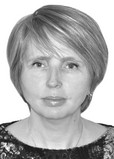Football as part of social capital of modern youth: regional aspect
Фотографии:
ˑ:
Dr.Sc.Soc., Associate Professor E.V. Kargapolova1
Dr.Sc.Pol., Professor A.P. Koshkin1
Dr.Sc.Soc., Professor N.V. Dulina2
PhD, Associate Professor Yu.A. Davydova1
1Plekhanov Russian University of Economics G.V., Moscow
2Volgograd State University, Volgograd
Objective of the present study was to identify regional features of football training in the structure of social capital of modern youth.
Methods and structure of the study. We analyzed information from foreign sources devoted to the results of relevant studies conducted in various regions of the world. We used the results of a specific sociological study "The 2018 FIFA World as viewed by the young people", which had been initiated and implemented by the Russian Society of Sociologists in November-December 2017. The data array totaled 4,703 profiles of students from 50 universities in 25 cities of Russia, including 250 students from Astrakhan.
Results and conclusions. It was shown that Astrakhan students play football more often than those throughout the Russian Federation. Therefore, football occupies a special place in the structure of social capital of the natives of Astrakhan, but the regional sports infrastructure potential is lower than in the whole country.
Keywords: football, social capital, student community, region.
References
- Bourdieu P. Formy kapitala [Forms of capital]. Ekonomicheskaya sotsiologiya: elektronnyiy zhurnal. v. 3. no. 5. November 2002. Available at: http://www.ecsoc.msses.ru/Transl.html (date of access: 25.04.2011).
- Barceló J., Clinton P., Seró C.S. National identity, social institutions and political values. The case of FC Barcelona and Catalonia from an intergenerational comparison. Soccer & Society. Volume 16, 2015. Issue 4.
- Bolter N.D., Kipp L., Johnson T. Teaching Sportsmanship in Physical Education and Youth Sport: Comparing Perceptions of Teachers With Students and Coaches With Athletes. Journal of Teaching in Physical Education. Volume 37, no. 2, April 2018.
- Dulina N.V., Kargapolova E.V., Strizoe A.L. Youth in modernization processes: assessment of the state of affairs (on the example of the regions of the southern federal district). Economic and social changes: facts, trends, forecast. 2017. Vol. 10., 2., 130-149.
- Esson J. A body and a dream at a vital conjuncture: Ghanaian youth, uncertainty and the allure of football. Geoforum Volume. 47, June 2013, Pages 84-92.
- Kargapolova E.V., Dulina N.V., Kargapolov S.V., Mironova Yu.G., Football for student communal cultures in south of Russia. Theory and practice of physical culture. 2019. No. 9. P. 47-50.
- Koshkin A.P., Novikov A.V. Social capital of students and faculty as a resource for improving the quality of education. Espacios. 2018. T.39. no.23. С. 23.
- Mauro M. Transcultural football. Trajectories of belonging among immigrant youth. Soccer & Society. Volume 17, 2016 - Issue 6: The Forgotten Game? Essential Issues for Junior and Youth Grassroots Football Culture
- Nicholson M., Sherry E., Osborne A. Negotiating national identity through loss: Australian newspaper coverage of the 2010 FIFA World Cup. Soccer & Society. Volume 17, 2016. Issue 4.
- Potrac P., Nelson L., O’Gorman J. Exploring the everyday realities of grass-roots football coaching: towards a relational perspective. Soccer & Society. Volume 17, 2016. Issue 6: The Forgotten Game? Essential Issues for Junior and Youth Grassroots Football Culture. pp. 910-925.



 Журнал "THEORY AND PRACTICE
Журнал "THEORY AND PRACTICE